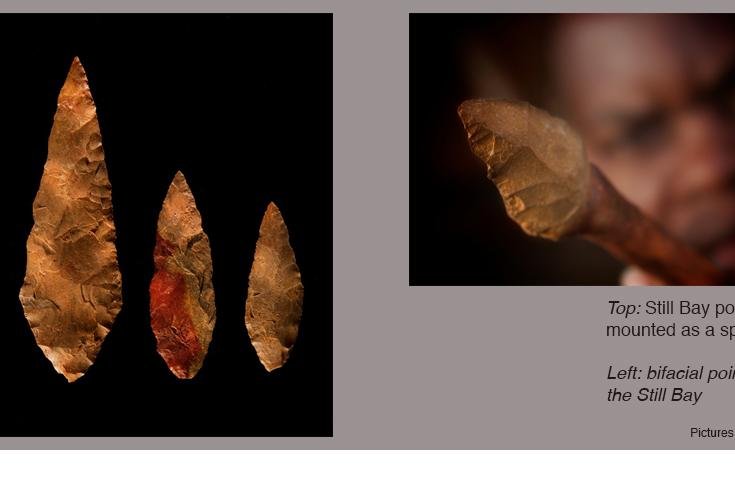Though the technological innovations of the Still Bay culture were highly advanced -- including effective spear head knapping -- their tools and techniques weren't as adaptable as the Howiesons Poort tradition. Photo by Craig Foster/Wits University
July 26 (UPI) -- Cultural flexibility and innovation was essential to early human populations as they adapted to a rapidly changing climate.
A new study, published this week in the journal PNAS, highlights the cultural adaptations that allowed early humans to expand into a variety of environments between 66,000 to 59,000 years ago, despite prolonged acidification in Southern Africa.
Researchers argue the early adaptability of the so-called Howiesons Poort techno-cultural tradition paved the way for the progress of modern humans.
"The most distinct of the many cultural innovations in the HP culture were the invention of the bow and arrow, different methods of heating raw materials -- stone -- before knapping to produce arrow heads, engraving ostrich eggshells with elaborate patterns, intensive use of hearths and relatively intense hunting and gathering practices," researcher Christopher Henshilwood, a professor at Wits University in South Africa, said in a news release.
A thorough survey of paleo-climatic data from HP archaeological sites proves the techno-tradition emerged and evolved during a period of pronounced aridity.
When scientists compared the distribution and trajectory of the Howiesons Poort tradition with the Still Bay tradition, which lasted from 76,000 to 71,000 years ago, they found the HP culture was more expansive and better able to adapt to a diverse array of environments.
The Still Bay tradition was highly advanced. The culture featured new methods for making spear points, as well as stylized bone tools and personal ornamentation. But the latest research suggests the HP culture was similarly advanced, yet more efficient and flexible.
"It seems from the little evidence that we have that the population of Homo sapiens in southern Africa was considerably larger during the Howiesons Poort period," said Henshilwood.
Though the first Homo sapiens emerged in Southern Africa roughly 260,000 years ago, modern humans continued to exhibit the same cultural and technological characteristics of their more primitive ancestors for at least another 160,000 years. It wasn't until 100,000 years ago that modern humans began to develop techno-cultural traditions distinct from non-modern populations.
Detailing the emergence of these early techno-cultural traditions can help paleontologists trace the trajectory of early modern human populations.















